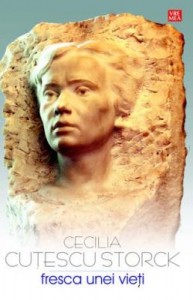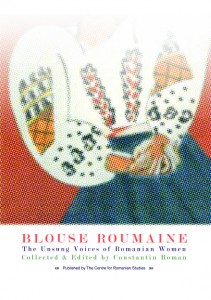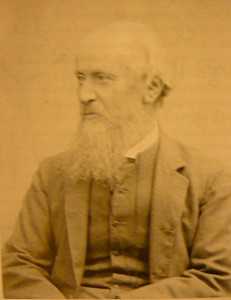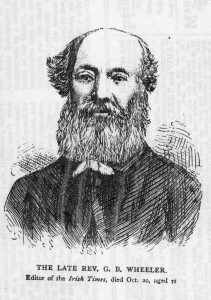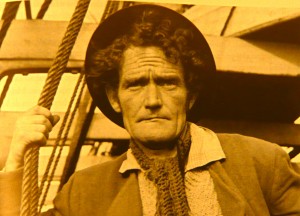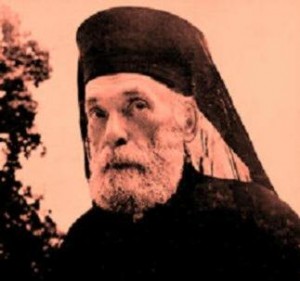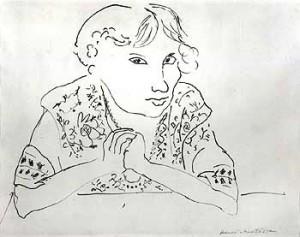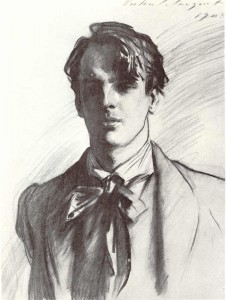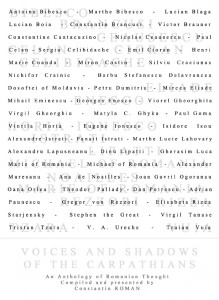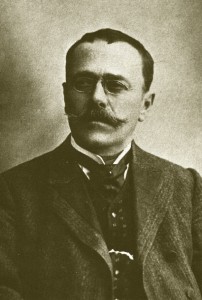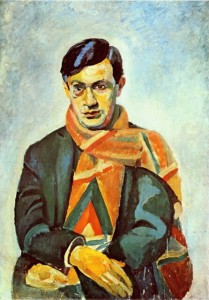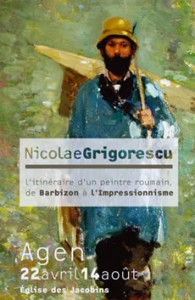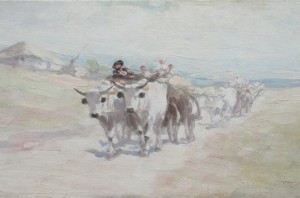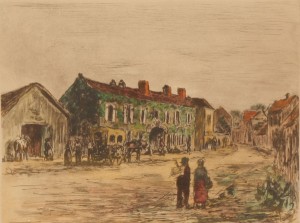THE VILLAGE GIRL WHO KICKED THE HORNETS NEST:
 Herta Müller (born in 1953) is an unusual choice for a Nobel prize for several reasons, some of which create, of necessity, controversy and heated debates not just in Germany, her adoptive country, but in Romania too – her country of birth.
Herta Müller (born in 1953) is an unusual choice for a Nobel prize for several reasons, some of which create, of necessity, controversy and heated debates not just in Germany, her adoptive country, but in Romania too – her country of birth.
Müller is ‘unusual’ because she is only the 12th female to get the Nobel for Literature in the last one hundred years: She also happens to come from a small and much troubled German ethnic minority from the province of Banat known as Suabian Germans (Schwaben Deutsche).
Furthermore, not since the Nobel Prize was given to Solzhenytsyn that such an accolade had been awarded to a writer who focussed on the repression under dictatorship in Eastern Europe and for this reason alone this event is significant.
 Finally, from the Romanian perspective, Müller comes from a country which lives badly the complex of being a ‘small country’ (like Belgium, or Ireland, or perhaps even the Basque Country – Euskal Herria), little understood and much misunderstood. At least through her literary output Müller could change this perception: being nominated for the Nobel Prize, puts Romania on the map in a very different way from the past stereotypes, of vampires, orphanages, human trafficking, trampling on human rights and more. Today and for the past twenty years since the end of Nicolae Ceausescu, the cobbler-dictator, dubbed by its sycophants ‘the Genius of the Carpathians’ (oh, yes…) modern Romania finds itself at the horns of a dilemma: that is not so much HOW TO CONFRONT one’s historic past and assume it, but rather HOW TO BURY this past. In this context Müller is a trouble-maker because she puts the finger on it and confronts headlong those in a position to make a CHANGE. yet are lacking the moral fibre to carry it out: Müller is the girl who kicked the hornet’s nest!
Finally, from the Romanian perspective, Müller comes from a country which lives badly the complex of being a ‘small country’ (like Belgium, or Ireland, or perhaps even the Basque Country – Euskal Herria), little understood and much misunderstood. At least through her literary output Müller could change this perception: being nominated for the Nobel Prize, puts Romania on the map in a very different way from the past stereotypes, of vampires, orphanages, human trafficking, trampling on human rights and more. Today and for the past twenty years since the end of Nicolae Ceausescu, the cobbler-dictator, dubbed by its sycophants ‘the Genius of the Carpathians’ (oh, yes…) modern Romania finds itself at the horns of a dilemma: that is not so much HOW TO CONFRONT one’s historic past and assume it, but rather HOW TO BURY this past. In this context Müller is a trouble-maker because she puts the finger on it and confronts headlong those in a position to make a CHANGE. yet are lacking the moral fibre to carry it out: Müller is the girl who kicked the hornet’s nest!
THE REPUBLIC OF BANAT:
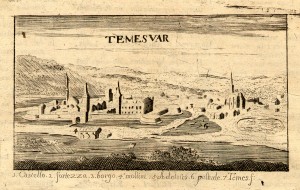 The historic province of Banat stradlles both sides of the Lower Danube from Southern Hungary, through Serbia all the way to the Danube Gorges which cut through the Carpathian mountains of Romania. It was for two hundred years from the mid 16th to the beginning of the 18th century the theatre of fierce battles between the Austrians and the Turks who nearly occupied Vienna and transformed Hungary into a ‘pashalik’ (o province ruled by an Ottoman pasha), Prince Eugene of Savoy finally repulsed the Ottomans to the South and the East of the Danube but in the process the native population of Banat was decimated. This caused empress Maria Theresa to invite immigrants from Germany, Luxemburg, Alsace and the Rhine valley to colonise Banat and gave them land and tax privileges.
The historic province of Banat stradlles both sides of the Lower Danube from Southern Hungary, through Serbia all the way to the Danube Gorges which cut through the Carpathian mountains of Romania. It was for two hundred years from the mid 16th to the beginning of the 18th century the theatre of fierce battles between the Austrians and the Turks who nearly occupied Vienna and transformed Hungary into a ‘pashalik’ (o province ruled by an Ottoman pasha), Prince Eugene of Savoy finally repulsed the Ottomans to the South and the East of the Danube but in the process the native population of Banat was decimated. This caused empress Maria Theresa to invite immigrants from Germany, Luxemburg, Alsace and the Rhine valley to colonise Banat and gave them land and tax privileges.
The colonists prospered in a foreign land: they built compact villages round their catholic churches and fiercely kept their language and their traditions. Today this dialect which has not changed for the past ten generations is the object of academic disquisition as a linguistic curiosity. However by the mid 19th century the Habsburg empire owing to the nationalist pressure of the influential Hungarian population became a ‘Dual Monarchy’ under the name of ‘Austria-Hungary’, By this act Hungarians gained equal rights to those of the Austrians. In turn the Hungarians imposed a dour politics of ‘Magyarization’ intended to cause the existent mosaic of minorities (Germans, Romanians, Serbs, Slovaks, Ruthenians, Jews ) to loose their identity. The Suabian Germans of Banat, like all the other smaller minorities in Austria-Hungary felt threatened and half a century later, after the end of WWI tried to found a separate German ‘Banat Republic’ around the city of Timisoara (now in Romania). The tough luck for such initiative was that the victors of Versailles knew little geography and even less history and they had other ideas in mind. This is how the province of Banat became divided between S.W. Romania, NE Serbia and a much smaller Hungary.
 SUABIAN GERMANS OF ROMANIA
SUABIAN GERMANS OF ROMANIA
BETWEEN THE TWO WORLD WARS:
In this event the Suabian Germans of the Romanian Banat gained after 1919 new privileges in the way of German-speaking schools, newspapers, publications and even a German Theatre at Timisoara. One of the internationally known Suabian Germans in the 20th century was Johnny Weissmüller (1904-1984) the Hollywood actor of Tarzan fame and the film scriptwriter and director of musicals Geza von Cziffra (1900-1989).
After the economic depression of the 1930s many Romanian Germans took National Socialism as a role model. Hitler embraced the German minorities living outside the border of the Reich, the ‘Volksdeutsche’ as his own and Romanian Germans did fight in the German armies on the Eastern Front whilst keeping their Romanian nationality.
THE PERSECUTION OF HERTA MULLER’S FOLK UNDER COMMUNISM:
Herta’s father survived the war. Her mother was sent to Siberia and the rest of her family was exiled to the inhospitable and harsh steppes of the Lower Danube in Baragan Plains. Here the dispossessed Suabian farmers lived in mud huts reminiscent of the Palaeolithic. Their land and houses were confiscated and they were allowed to return to the Banat and start a new life from scratch only after the partial liberalisation following Stalin’s death, in 1953. This is the period which marked Herta Müller as a child in Romania born that very year. These times are depicted by the writer in uncompromising colours:
In my family each member lived its inner private life like on an island. These were the 1950s, during Stalinism, living in this isolated village, whose main street had no tarmac to take us to the city, Yet in spite of this isolation our village was not a sort of natural reserve could not be immune from the inroads of politics . Here three or four political activists kept under control the whole village. They arrived from the city. They just graduated and were sent to this god-forsaken village to start their career as controllers, outdoing each others in threats, interrogations and arrests. Our village had 405 houses and 1,500 inhabitants. All of us went about our business living in fear. Nobody dared talking about it. Although I was a small child too little to understand the meaning of fear, yet the veru essence of fear, the sentiment of fear took hold of my brain. All members of my family were affected.
In 1968, when Müller was fifteen the Russian tanks entered Czechoslovakia to quell the Czechs struggle for democracy. At that point she felt that she had to do something: so she enrolled in an underground organisation of German-speaking students, Aktionsgruppe Banat which soon was infiltrated by the Securitate. Then followed arrest, interrogation and constant surveillance. The singing of German folk songs and the reading of German literature became acts worthy of suspicion and reprimand by the secret services. From that moment on Müller remained on the Securitate’s radar screen. Eventually she graduated from the University of Timisoara to become a teacher, But when the Securitate wanted her to enrol as a collaborator she refused and lost her job and with it her livelihood:
One day, on the way to the hairdresser, somebody suddenly grabbed me by the arm: it was a policeman who took me to the basement of a nearby block of flats, where three men lay in wait for me. The one who seemed to be the boss accused me, amongst others, of being a prostitute of Arab students and that I was doing it to be paid for in kind for cosmetics (t.n.under communism beauty products considered inessential were absent from shops). I answered that I knew no Arab students to which he retorted that if he wanted to he could find twenty Arab students to testify against me. Then the slender policeman opened the door to let me out and threw my ID card on the ground As I bent he kicked me hard in the back: I fell face down on the grass, behind some bushes. I vomited like a dog, without raising my head.
EXODUS:
However, Ceausescu needed hard currency from the West to underpin his pharaoh projects, so something had to give way: the export of Jews and Germans in the 1960s and 1970s became very lucrative: these two minorities were useful commodity which brought a steady source of hard currency to the bankrupt communist economy. The Suabians, brought to the brink of despair and dispossession, took their chance and left their ancestral homes after living for 300 years in Banat. The destination for their ‘promised land’ was always West Germany, never East Germany! Once Müller and her husband requested to leave Romania their home was confiscated and they had to pay 12,000 Deutsche Marks (granted by the German Federal Government) to obtain stateless papers and a visa to leave Romania for good. Their luggage was limited to 80 kilos per person. It was like the 18th century slave trade of darkest Africa, except that this happened in the heart of 20th century Europe. A community of 300,000 Suabians was reduced to 75,000 mostly elderly. Even more dramatic was the case of the much larger Saxon German minority of Transylvania, which settled in Romania since the 13th century. Being depopulated most of the fortified Saxon villages today are in a desperate state of disrepair, comparable to the ruins of a collapsed Roman empire.
The depletion of the Jewish community was even more dramatic from just under one million before WWII down to a few thousands. What General Antonescu’s dictatorship did not succeed before 1944 Ceausescu made a success of it. Even smaller Greek and Turkish minorities amounting to a few thousand families also left although neither Greece nor Turkey assisted with cash for passports which had to be paid instead by rich family and friends abroad. Only the Russian and Ukrainian minorities had nowhere else to emigrate to, as the situation in their countries was not much different from that in Romania. As for the Romanians they had to shut up and bear it: they did, with the exception of a few outbursts of despair by coal miners and workers of a tractor factory and of the Romanian ‘ Charter 77’ signed by a small number of people who were given harsh sentences.
Clearly in Ceausescu’s Romania Herta Müller had no other option than to join the Exodus. Her decision to leave her home country was not easy as she was brought to the brink of despair: for her it was a matter of physical survival. She was no ‘economic refugee’ she was a political refugee – a Romanian citizen of German stock who was persecuted for her moral values and her stubborn resistance to the dictatorship. In the above circumstances it was inevitable that, when she left Romania, the 35 years-old Müller took with her not just the prescribed 80 kilos of luggage but she smuggled out an invisible yet much heavier suitcase of painful memories of repression under dictatorship.
MULLER’S CODED LANGUAGE:
It is therefore little surprising that Herta Müller’s novels which she calls ‘auto-fiction’ depict her life in Romania in a language coloured by the pain of the exile:
I sang without hearing my voice. I fell from a fear full of doubt into a fear full of absolute certainty. I could sing the way water sings. Maybe the tune came from my singing grandmother’s dementia. Perhaps I knew tunes she lost when she lost her reason. Perhaps things that lay fallow in her brain had to pass to my lips.
(Herta Müller, The Land Of Green Plums)
Soon the muffled revolt of being forced to leave Romania comes to the surface:
I wished that [my interrogator] would carry a sack with all his dead. I wished his hacked-off hair would smell like a newly mown graveyard whenever he sat at the barber’s. I wished his crimes would reek when he sat down at the table with his grandson after work. That the boy would be disgusted by the fingers that were feeding him cake.
(Herta Müller, The Land Of Green Plums)
and again in one of her interviews she recalls the ‘language of innocence’ used in her childhood’s village:
In the village where I was brought up, there were no Romanians. I only learned Romanian at school, as a foreign language… In Timisoara the written word in the Suabian dialect coexists with the language of communication (Romanian). To these two languages one added the wooden language of the communist party, which hijacked the idiom for its own benefit. Hence our utmost vigilance exerted to avoid using words or concepts in our vocabulary, which were stained or adulterated by the political ideology. To describe our reality we were constantly in quest of an innocent language.
RECOGNITION IN GERMANY:
Her adaptation in Berlin – a place very different from her native village of Banat or even of Timisoara was not easy: there was the same language which separated her from a Metropolitan German. The Suabians were reputed to say:
We are good at everything except at speaking standard German.
Doubtless as an educated woman Herta smoothed over such differences, although her accent, her ‘vocabulary of innocence’ forged during the dictatorship days left a footprint in her spoken and written language. Some of her German critics accused her ‘stagnation’, of being ‘frozen in her past’ because her novels dealt mostly with the effects of totalitarianism, rather than moving on and dealing with the ’injustices perpetrated in Western society’… But their voices soon became a minority once Müller gained international reputation and acclaim. However, the clash between this uprooted exile writer from the East and the left-wing intelligentsia from the West, even the disowning by her Banat fellow Germans from West Germany, manipulated by Romania’s Securitate was vicious: ‘
Your books should be burnt and you with it – you are not wanted here.

Horia Vintila exiled Scholar and diplomat the target of a character assasination campaign by the Securitate to compell him renouncing the Goncourt Literary Price in Paris.
Such parallel confrontations have been familiar to most Romanian exile writers especially in France (q.v. Monica Lovinescu, Marie-France Ionesco) where character assassination attacks, mostly instigated by the Romanian Secret service agents abroad, were effectively sustained against Paul Goma, Virgil Gheorghiu, Emil Cioran, Eugene Ionesco, Mircea Eliade or Vintilà Horia. The latter was nominated in 1960 for the prestigious Goncourt Prize for his novel Dios ha nacido en exilio (Dieu est ne en exil) But following a witch hunt in the French press, including by Jean-Paul Sartre he was compelled to refuse the award and settle in Spain where he died in Collado Villalba in 1992. In the same context it is significant that in 1997 Herta Müller resigned her membership of Penn Germany in protest against the merger with the former PEN of East Germany, renowned for a membership riddled with former Stasi agents.
ROMANIA’S BETE NOIRE:
Romanians of Romania, still heavily handicapped by their communist ways had other methods of denying Müller her rightful place in literature:
she writes in German, therefore she is no Romanian writer…
When this wooden language could no longer hold reason, then resistance by omission became far more effective: for Herta Müller was again and again air-brushed out of all books of literary criticisms or anthologies published in Romania, even two decades after the fall of Ceausescu:

Literary critic and President of the Romanian Writers Union: a fan of the Socialist Realism in Literature: surprised that "a relatively young woman" such as Herta Muller got the Nob Prize: "she left Romania such a long time ago"...He made sure that Muller was air-brushed out of all his Anthologies.
Her literary contribution was ignored in the România Literarà list of Romanian writers, some 13 years after the demise of dictatorship. She was equally absent from both the four-volume dictionary of Romanian writers as well as from the latest compendium of Romanian exiled writers. This is, undoubtedly, Romania’s loss, because Müller’s fiction is deeply rooted in Romanian soil and Romanian socio-political history. Still, by 2005 her resounding success abroad could no longer be ignored and in 2005 and some 18 years after she left Romania, she was feted in Bucharest, where she made a comeback with the translation at Editura Polirom of Este sau nu este Ion. In spite of this exercise in mending fences with the past Herta Müller has a sharp sense of realities, as demonstrated in her article published in Tagesspeil of 17 July 2008, which is echoed by the Frankfurter Rundschau:
It is a scandal that Romania put forward as its representatives (in Germany, a.n.) two persons who during the dictatorship (a.n. Ceausescu’s) were collaborators of the secret services.
She is joined in her protest by the writer Richard Wagner who adds:
As it happened before in the past we shall carry on talking about an East-West dialogue between useful idiots and secret services informers, about cultural exchanges as well as about trends and research methods. All of it as if nothing had happened, as if nothing mattered. Quite the contrary it does very much matter both in Germany and in Romania. One has barely started understanding the past that one falls victim to amnesia. Democracy remains helpless whilst being denied a template of real reference values.
Such bizarre methods of appointing writers of a dubious political past and morality to high profile positions in Europe, whether, in diplomacy or heads of Cultural Institutes (equivalent of Instituto Cervantes, the Goethe Institut, or the Institut Francais) or even to ‘Summer Schools’ of Romanian culture abroad is still possible today because the Head of the Cultural Committee in the Romanian Senate is a former Court poet of Nicolae Ceausescu, the head of the Romanian Writer’s Union was himself under dictatorship a successful approved writer under Gheorghiu-Dej and Ceausescu. The head of the Romanian Cultural Institute in Bucharest because of promoting such people came under direct criticism from Herta Müller who asked him to resign. For him this was NOT an error of judgment it was a pattern the consequence of which raises more fundamental questions about his own real agenda and moral fiber.
Some people said that:
‘in Romania Herta Müller is known more as a dissident rather than a writer’
Surely, if her books are refused publication by editors in Bucharest, if they are not marketed after they are published, if she is treated as:
‘a minor German writer, writing (mostly) in German, receiving literary prizes only in Germany’,
who is to blame?
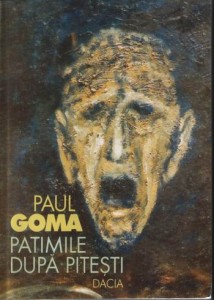
Paul GOMA, Paris exiled writer and anti-communist dissident fell foul of Ceausescu for issueing a Romanian version of Charter 77: he notes that Herta Muller never supported his actions, never signed the Charter - He also says that he published the same kind of books in Germany as she did but ten years earlier!
Worse still, Paul Goma, the Paris exiled anti-communist writer and initiator of Romania’s ‘Charter 77’ (yes there was one with a dozen signatures on it) complains:
I wrote books in Germany before Herta Müller… Why did not she write a book about her mother’s life in the Soviet gulags? Why hasn’t she signed Charter 77 at that time she was 24 years of age, old enough to understand!
In the meantime Müller’s god-forsaken village of Banat has lost all its German population sold up the Danube by Ceausescu to have then resettle in West Germany. This village is now repopulated by Romanian peasants who, on hearing the news, asked:
What is this Nobel Prize like?
When told it was a literary Prize awarding one million Euros, they were quick to inquire:
What‘s in for us?
They may well ask, indeed! If pigs had wings…
Among the rarefied and self-absorbed literary circles of Bucharest the news jolted them like a thunderbolt, so they put on a brave face, begrudgingly:
Of course we are pleased to see that such a young writer got a prize
says Nicolae Manolescu, the President of the Romanian Writer’s Union who enjoyed forty blissful years of successful career under a Stalinist dictatorship. Gerontocracy in Romania still yields tremendous power and for it the 56 year-old Herta is ‘too young’ and will have had to wait in Romania a very long time before she got some recognition, until the cows came home! Pity she left for Germany, where the rules are different from Romania, otherwise, surely, she would have become ‘one of us’, a ‘promising writer, that is, talented but unrecognised by the rest of world. Still, we address each other with that gracious title of ‘Maestro’, but all in all we are relegated by the rest of the world to the status of ‘unknown illustrious’. All young Romanians know it perfectly and at the first opportunity they vote with their feet – one million under dictatorship and several millions more, since Ceausescu was shot, now live abroad.
In the meantime, at the Frankfurt Book Fair, the Romanian stand of 140 square metres is morose and staff is sulking:
We were taken by surprise…we planned this stand a long time ago, before we knew that the Nobel Prize was awarded
implying that they could not change anything: they have no autonomy to change what Bucharest dictated to them or else they might risk punishment and burn their ‘literary’ boats home (and all the privileges that go with it).
All this for … eh… ‘Herta Who? Surely it’s not worth it!
They could not invite Müller even to sign the few books they have at the stand or maybe even to offer her a contract, or invite her German publisher along to say something…Romania is frozen in its old ways, in a communist time warp: wake up Romania!
Müller is used to it and she knows the game. After twenty years of persistent opposition she was just allowed to inspect her Securitate file from Bucharest – three volumes of 900 pages with huge chunks missing…
…of course, it was all doctored…
she says. Indeed, whole incidents from her life of persecution in Romania were completely air-brushed: without even any concern for being more subtle at this cut job: maybe these people are completely insensitive – they do not care because they feel they still have the upper hand in the day-to-day life in Romania.
THE LANGUAGE OF THE DISPOSSESSED:
At the Frankfurt Book Fair Herta directed her criticism at China, showing sympathy to its censored writers and to the Uigur dissidents thrown in political jails: even closer to home, in Europe, from the Caucasus to the Atlantic, she might find enough good causes to fight for, if she could only cope, as there are so few warriors for so many good causes to espouse and too many ignorant, complacent and political opportunists with different agendas:
Romanian women? what Romanian women?
asked a British publisher on reading the proposal for a book on Romanian women voices, before the Nobel Prize was announced… to which he added demurely:
I only know of three!
The self-absorbed Anglo-Saxons recognise few values outside their culture, so I did not ask him which specific women he had in mind? Instead, by the way of an encouragement I prompted him:
This is already a good start!
but it was to no avail!
Now that he will know four such women instead of three, will Herta’s Nobel Prize for Literture change the tide and put Romania on the British and American publishing landscape? This should be the job of the Institutul Cultural Roman ran in earnest by Horia Roman Patapievici: but he is far too busy, as Muller pointed it out, promoting his ex-informer pals and other staff like the Madam of the ICR Paris office who considers:
‘Romanians writing in a foreign language as not being Romanian’,
quite a hang over from her old communist script, learned from George Calinescu‘s own History of Romanian Literure published under Ceausescu and paid for by C. Dragan.
Clearly Romania and Romanians live badly their isolation in Europe as in the rest of the world, but they have only themselves to blame for it – Herta Müller, a diminutive exiled lady, of slender frame, whose obduracy upset so many people, made no concessions: she may be only an exception. Still,
she is the girl who kicked the hornet’s nest.
so some good may come out of it!
As for the Nobel Literary Jury, Müller is different as a writer, demonstrating
the concentration of poetry and the frankness of prose, depicting the landscape of the dispossessed.
Multumesc and God bless you, Herta: I know that it is a tall order, but there might still be fresh hope for some if not ALL the dispossessed!
NOTE:
More about Herta Muller, the historical Social and Political landscape of Romania, read:
Blouse Roumaine, the Unsung Voices of Romanian Women
http://www.blouseroumaine.com
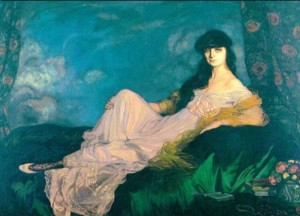 In al doilea rand, alegerea subiectului si al punctului de referinta, plasarea lui intr-un context istoric si social dar si intr-un cadru European, plaseaza antologia “Blouse Roumaine” intr-o categorie foarte diferita.
In al doilea rand, alegerea subiectului si al punctului de referinta, plasarea lui intr-un context istoric si social dar si intr-un cadru European, plaseaza antologia “Blouse Roumaine” intr-o categorie foarte diferita.

